Nestled in the heart of Doha, a desert rose has blossomed, and within its petals, a narrative unfolds – one that resonates with the whispers of history and the promises of the future. Meticulously preserved and revitalised by acclaimed French architect Jean Nouvel, the National Museum of Qatar (NMOQ) embodies the profound connection between Qatar and its sandy beginnings. The arid expanse itself forms the bedrock of Qatar—the nation’s very foundation and image. This connection with the desert’s beauty, resilience, and cultural significance sets the stage for NMOQ’s exceptional journey.
The museum’s creation draws inspiration from Qatar’s natural heritage and its more recent transformation. The discovery of oil in 1940 marked a pivotal moment, propelling Doha into a realm of towering splendour. Nouvel’s innovative design harmonises this delicate balance between tradition and modernity, elegantly merging the historic palace of Sheikh Abdullah bin Jassim Al Thani, a pivotal figure in Qatar’s modern history, with the contemporary museum structure.
This architectural masterpiece, a US $434 million, 430,000-square-foot endeavour, defies conventions, mirroring Qatar’s ambition to redefine its cultural landscape. The culmination of a decade-long endeavour, NMOQ officially opened its doors to the public in 2019, establishing itself as Qatar’s most cherished cultural gem. Its façade is a marriage of modernity and classic design—a pale-coloured, Jenga-meets-Kandinsky structure adorned with interlocking discs resembling oversized delicate petals. These structures, numbering 250,000, are artfully set in 76,000 panels, creating a truly remarkable sight.
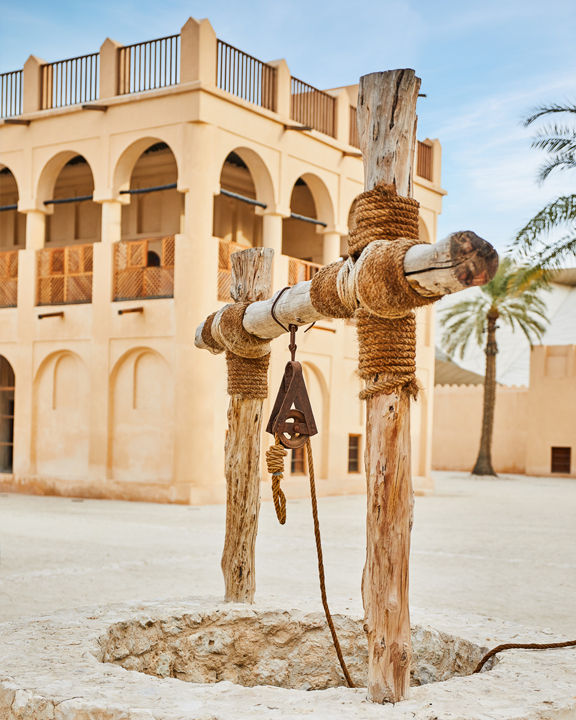 A Journey Through TimeNMOQ’s design is a tribute to Qatar’s nomadic roots—the traditional ‘house of hair,’ or bait al-sha’t. These portable abodes, woven from the hair of black goats by Bedouin women, provided shelter against the unforgiving desert environment. This homage symbolises the inseparable bond between Qatar’s past and present, transcending the conventional museum experience. The museum’s purpose goes beyond being a repository of artefacts; it aspires to recount Qatar’s evolving architectural narrative, project its cultural identity, elevate its global standing, and ignite a thriving cultural industry. Upon entering the space, one is sure to embark on a captivating journey through time. The exhibits lovingly preserve and illuminate Qatar’s history, showcasing a rich tapestry of artifacts that tell the story of its evolution. From the opulent pearl carpet of Baroda, a relic from an era of grandeur to the meticulously restored palace of Sheikh Abdullah bin Jassim Al Thani, where echoes of history resonate, each exhibit weaves a narrative that echoes generations past.
A Journey Through TimeNMOQ’s design is a tribute to Qatar’s nomadic roots—the traditional ‘house of hair,’ or bait al-sha’t. These portable abodes, woven from the hair of black goats by Bedouin women, provided shelter against the unforgiving desert environment. This homage symbolises the inseparable bond between Qatar’s past and present, transcending the conventional museum experience. The museum’s purpose goes beyond being a repository of artefacts; it aspires to recount Qatar’s evolving architectural narrative, project its cultural identity, elevate its global standing, and ignite a thriving cultural industry. Upon entering the space, one is sure to embark on a captivating journey through time. The exhibits lovingly preserve and illuminate Qatar’s history, showcasing a rich tapestry of artifacts that tell the story of its evolution. From the opulent pearl carpet of Baroda, a relic from an era of grandeur to the meticulously restored palace of Sheikh Abdullah bin Jassim Al Thani, where echoes of history resonate, each exhibit weaves a narrative that echoes generations past.
 Nouvel’s architectural brilliance is evident throughout, seamlessly merging aesthetics and sustainability. The façade’s interplay of light and shadow pays homage to the Qatari sun, a testament to his holistic approach. The museum’s design narrative draws inspiration from the same elements that shape desert roses—sands, winds, and saltwater—infusing NMOQ with an essence that reflects Qatar’s past while propelling it into a vibrant future. This narrative-driven approach echoes Nouvel’s work in the Louvre Abu Dhabi as well, bridging cultural divides and embodying Qatar’s legacy.
Nouvel’s architectural brilliance is evident throughout, seamlessly merging aesthetics and sustainability. The façade’s interplay of light and shadow pays homage to the Qatari sun, a testament to his holistic approach. The museum’s design narrative draws inspiration from the same elements that shape desert roses—sands, winds, and saltwater—infusing NMOQ with an essence that reflects Qatar’s past while propelling it into a vibrant future. This narrative-driven approach echoes Nouvel’s work in the Louvre Abu Dhabi as well, bridging cultural divides and embodying Qatar’s legacy.
NMOQ’s allure extends beyond its physical structure, enveloping visitors in a rich tapestry of experiences. Steel, glass, and fibre concrete converge to create a sanctuary of cultural encounters within the expansive 225,000-square-foot interiors. Eleven meticulously curated galleries, research sanctuaries, conservation laboratories, and inviting cafes unfold within its walls.
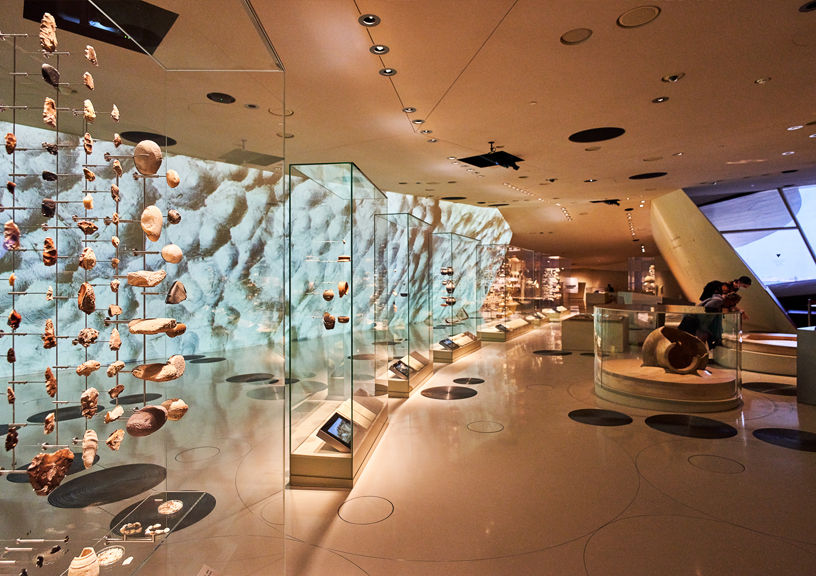
The museum complex also boasts a 220-seat auditorium, two cafés, a restaurant, a gift shop, separate facilities for school groups and VIPs, heritage research centres, conservation laboratories, and museum collection storage. Notably, a 70-seat forum pays tribute to Qatar’s culinary heritage, reflecting its maritime legacy celebrated in exhibits tracing its lineage from ancestral roots to urban evolution.
Digital Horizons and Cultural ResonanceThe galleries within NMOQ offer more than visual delights—they invite multisensory exploration. Auditory narratives, visual panoramas, and even olfactory stimuli transport visitors through bygone eras, creating an immersive encounter with history’s embrace. Nouvel’s use of microporous acoustic plaster transforms walls into resonant canvases, enveloping visitors in an auditory reverie that transcends temporal boundaries.
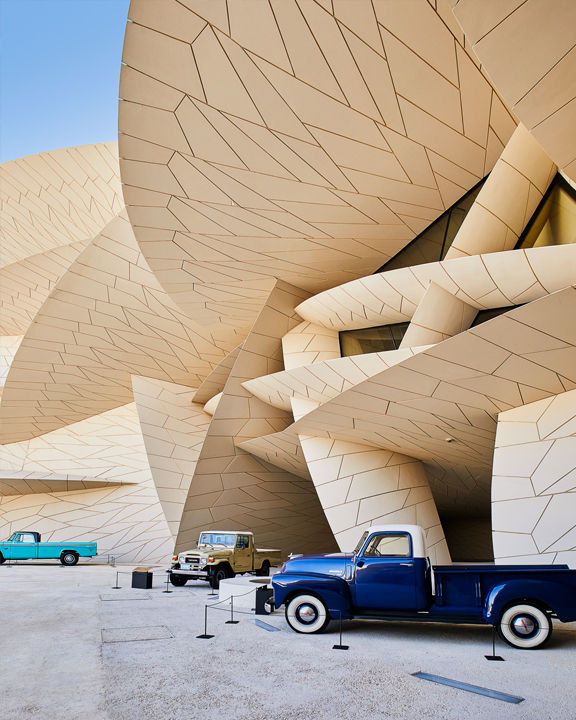
Central to NMOQ’s narrative is the meticulously preserved palace of Sheikh Abdullah bin Jassim Al Thani. Once a hub of governance, this historic seat of power now bridges yesteryears and today, inviting visitors to traverse epochs and touch the essence of Qatar’s metamorphosis. The museum pays homage to Qatar’s maritime legacy through exhibits celebrating dhows—vessels that navigated the Persian Gulf for trade, pearls, and fishing. The threads of Qatar’s lineage, urban evolution, and modern society are interwoven in its exhibits, presenting a cohesive tapestry of tradition and progress.
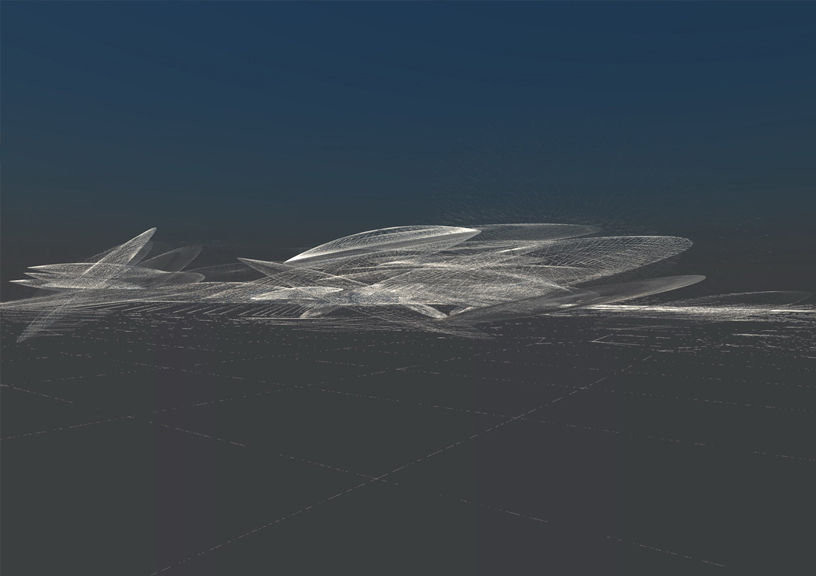 Located on the fourth floor of the National Museum of Qatar, Jiwan is the second Alain Ducasse restaurant to open in Qatar. With a contemporary Qatari menu and interior designs by Koichi Takada Architects, Jiwan offers an immersive gastronomic experience, inviting guests on a sensory journey through Qatar’s rich heritage and unique landscape.
Located on the fourth floor of the National Museum of Qatar, Jiwan is the second Alain Ducasse restaurant to open in Qatar. With a contemporary Qatari menu and interior designs by Koichi Takada Architects, Jiwan offers an immersive gastronomic experience, inviting guests on a sensory journey through Qatar’s rich heritage and unique landscape.
In this digital era, NMOQ’s vision transcends its physical boundaries with the NMOQ Explorer, a groundbreaking collaboration with Microsoft. Through artificial intelligence, the treasures within NMOQ become accessible to global audiences, defying geographical constraints and redefining the museum experience. Qatar Tourism’s dedication to excellence aims to attract over six million international visitors annually by 2030, solidifying Qatar’s position as the Middle East’s fastest-growing cultural destination.
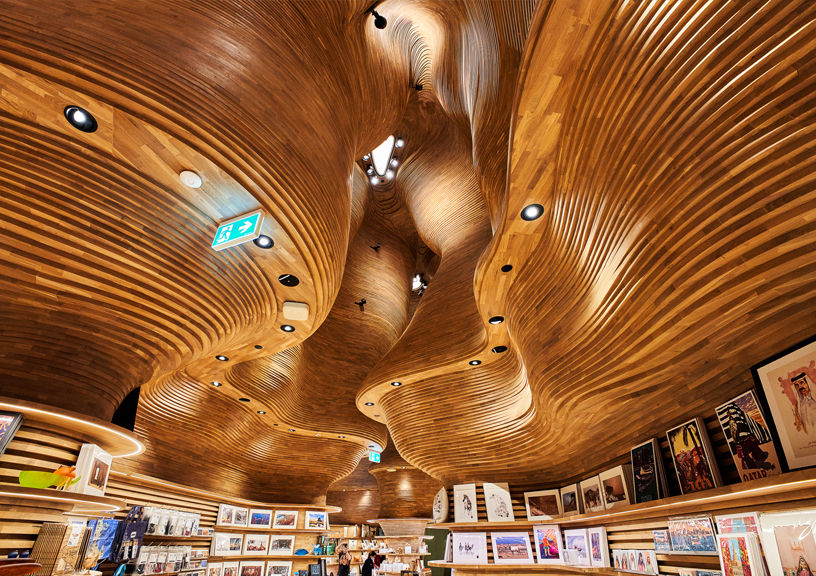 The National Museum of Qatar isn’t confined to being a mere repository of history; it’s an intricate masterpiece that seamlessly interweaves Qatar’s past, present, and future. Nouvel’s creation orchestrates an enchanting symphony—a harmonious blend of narratives and aspirations destined to resonate across generations.
The National Museum of Qatar isn’t confined to being a mere repository of history; it’s an intricate masterpiece that seamlessly interweaves Qatar’s past, present, and future. Nouvel’s creation orchestrates an enchanting symphony—a harmonious blend of narratives and aspirations destined to resonate across generations.